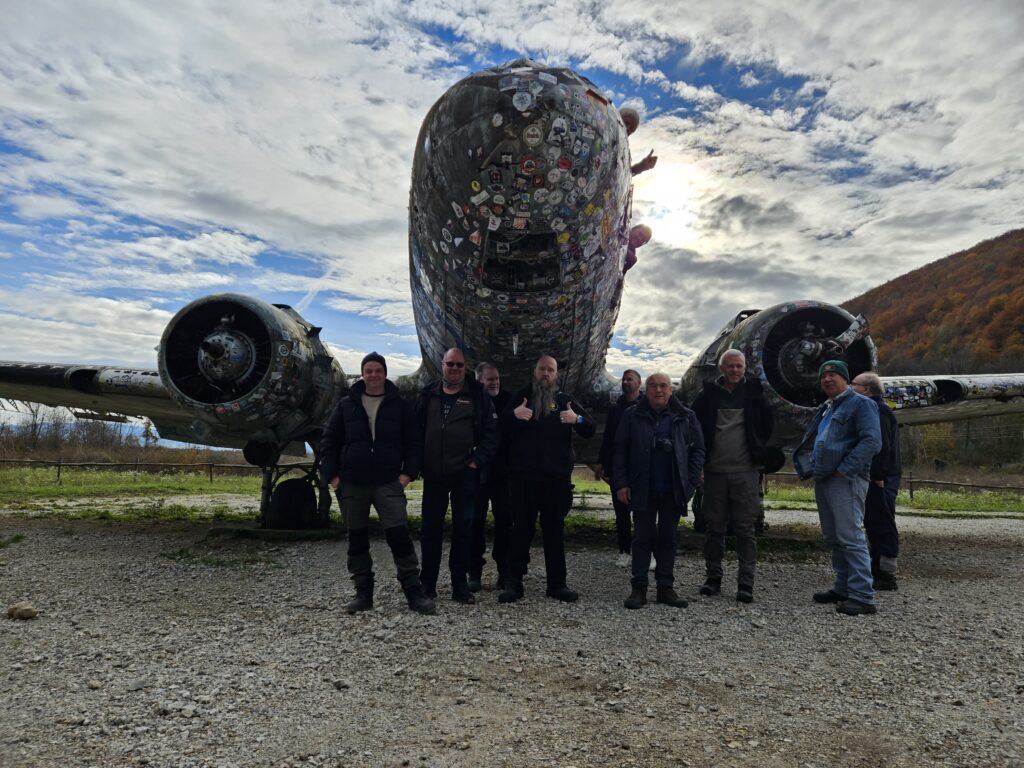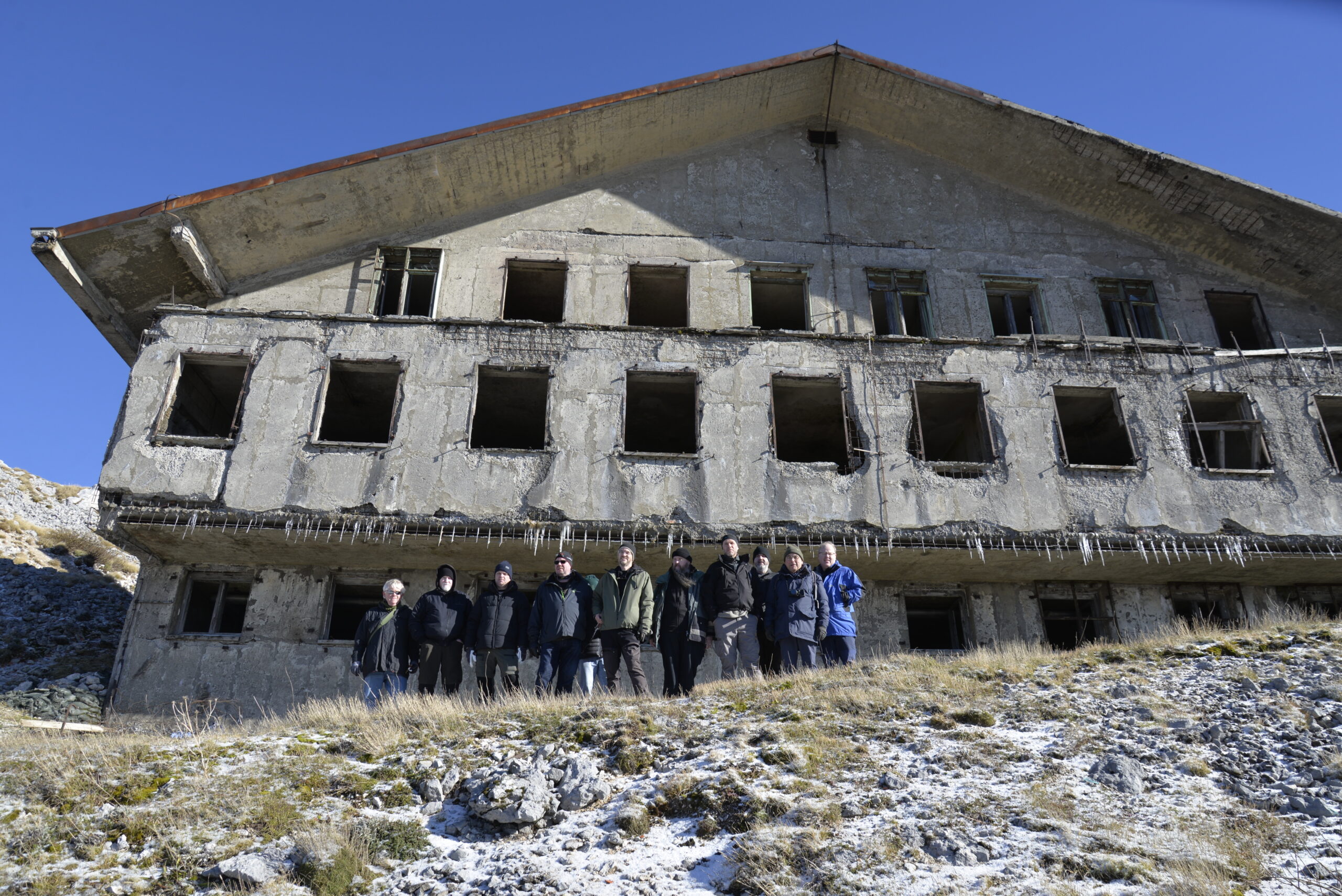“Thank you very much for the trip. It was excellent, possibly my best bunker trip ever!” /TP

Together with 10 participants I arrived to Zagreb airport in the afternoon of 17th November.
People from Sweden, Norway and U.K waited for the last two arriving around 3pm,
and we were off well before the 4pm deadline set up in the itinerary.
Branimir from Plitvice Outdoor Travel agency and colleague drove us towards our accommodation for two
nights in Grabovac. First off, we managed to look at the museum over the 1991-1994 war outside the town of Karlovac. This was found to be a nice museum with lots of artefacts from the war but the strongest memory from the visit was the local peoples candle ceremony along the main road, remembering the Vukovar massacre from 18th November 1991.
With some roadworks en-route to Plitvice Holiday resort it had gone dark when we arrived at our rooms. With tomorrow being a holiday to remember the lost and killed in the fight for sovereign we filled up snacks and drinks before heading to the local restaurant for dinner and planning for a full field day tomorrow.
Saturday 18th
started with a good breakfast and collection of lunch packages. At 09:00 three 4×4’s lined up to take us up in the mountains to the peak Gola Pljesevica. The road is possible to drive by yourself but in recent time and with refugees trying to enter the EU this way the Police are more and more active in the area,
and you are best to have an agreement with the local police to enter the border area.
The drive is only some 45 minutes up to the peak at around 1600 metres. The people in the first car was lucky enough to see a bear on the road for around 10 seconds before it disappeared into the forest.
The old army barrack and radar installation from the Cold war was later used by the UN for peace keeping and even later by NATO troops, so the peak has a long military history.
Views where wonderful, starting with clouds covering the Bihac valley and later clearing up. Most of the runways for the Bihac/Zeljeva air base could also be seen from up here – and the main purpose of the radar station was to feed information down to the air base.
Our main goal was to explore the underground tunnels that mainly was transport tunnels to the vital radar installations but also served
as backup generator and dormitories. The main building is the huge villa on top of the peak, looking like something from the Alp region. While exploring the area and the tunnels you literally go between Croatia and Bosnia-Herzegovina all the time.
After some tea, coffee, raki and lunch we headed back down the mountain after visiting the modern and active radio station, looking like the rocket used by Tin-Tin to go to the moon!

Photo: Branimir Belinić
Securely down on lower grounds we headed through some small villages and finally arrived at the small town of Zeljava and the start of the runways for the base.
A total of five runways with two larger and three more like emergency take-off are all in one way or another leading to the four entrances to the Zeljava mountain hangar.
Object 505 or “Klek” merged from the Yugoslavian communist parties wishes to secure their
MiG fighters. They took and got help from us Swedes, developers were authorised to visit at least one of Sweden’s Cold War underground hangars and that visit led in some part to the development of the Zeljava mountain hangar – that probably is the biggest in Europe and one of the three known to exist within former Yugoslavia.
We started by entering entrance 1, the most northern of the four. Some started documenting right away and some walked the whole length of the system, ending at entrance 4 close to the Bosnian border. While outside talking Bosnian police patrolled the border 40 meters beyond our position but as we were white-skinned and had cameras they just waived and continued to search for immigrants trying to get into EU.
The tunnelsystem inside is to some part destroyed by the Yugoslavian army during the war with big detonations being set inside. Almost all equipment are also gone and most of the sewage and electrical systems and their channels are also taken away, probably by metal thieves during the over 20 years of neglect. Some rooms still have some maps and parts of furniture and the room for the surveillance squadron with photo developing stations are fairly intact.
We had a special object to look for, the alleged elevator going up to the command bunker some 50-60 metres up the mountain. Some of us found remains of what could have been an installation in a wider shaft and in the area that some maps said that the command centre should be. Time flew and the last car left the hangar well after dark for the 30 min drive back to the resort and the much-welcomed dinner.
Sunday 19th
Sunday was a bit warmer and more clouds in the sky. We headed back to Zeljava once more for visit to the old barracks and to the main runway that is furthest away from the mountain.
Me and at least 1-2 more needed more time in the tunnels. We had also persuaded Branimir to hike up the mountain side to check for the command centre, that we knew was somewhere between entrance two and three. We
said we should meet up in an hour again. I went back to the alleged elevator shaft to take some vertical photos of the shaft when I all of a sudden heard voices and when looking up a torch! I’d made contact with Branimir some 50 meters up!
We rendezvoused outside and at bit over half the group headed up the very steep slope towards the command centre. All over this slope there were small white flags from the de-mining companies that had cleared the area. After a tough climb we were finally inside the burned-out command centre/control tower and could both look down the shaft and out the observation windows towards the system of runways below.
Very satisfied with the visit we now headed back towards Zagreb with one more major stop on the way. One of Tito’s some 20-30 villas are abandoned in the hills of the national park. To our surprise there was also some underground tunnels that was used for escape from the villa, ending some 300 meters away in the dense woods.
We could explore the once very fancy villa, now derelict. After another nice visit we had a last 2h drive back to our hotel in Zagreb where our guides left us and could head back to their families. We explored
Zagreb by night with a restaurant visit and some of us check out the old shelter tunnels.
Last day had us on different departures from Zagreb. Most of us had a walk in downtown before heading out to the airport.





























































































































































